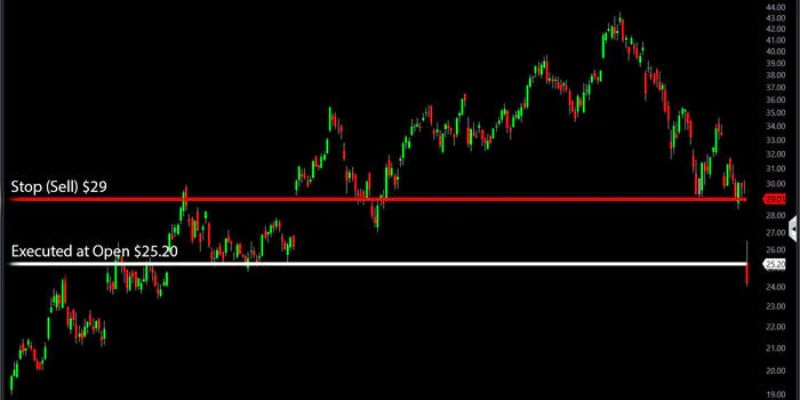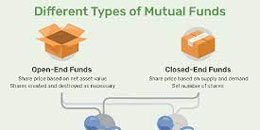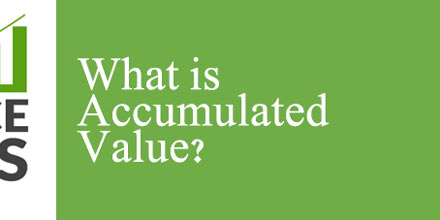
Are you a trader concerned about gaps in stock prices? If so, you're not alone – many investors fear for their capital when there is an unexpected jump or drop in the share price of a security. Fortunately, strategies are available to help minimize risk and protect your profits from substantial losses due to volatility.
In this blog post, we'll discuss stop and limit orders and how they work to reduce the chances of a gap occurring while trading stocks. We will look at how these order types are used and provide some tips on minimizing risk when implementing them.
So whether you're new to investments or an experienced investor seeking additional protection against gaps, this article has something for everyone!
What Are Stop and Limit Orders, and How Do They Work

Stop and limit orders are instructions used to control risk during trading. A stop order triggers a sale or purchase when the stock price reaches a certain level, while a limit order sets the maximum or minimum amount you're willing to pay for an asset.
For example, if you own shares of XYZ Corporation and want to protect yourself from a steep price drop, you could place a stop order at the stock's current price. If the stock's value falls below your predetermined threshold, the order will be placed, and your shares will be sold to protect your capital.
Similarly, if you're looking to buy a particular asset but want to ensure you pay only a little for it, you can use a limit order. This will specify the maximum amount you're willing to pay for the security, and the order will only be executed if it meets your pre-set criteria.
These orders can help protect you from wide price fluctuations in volatile markets, allowing you to manage risk and control your trades.
What Is Gap And How the Stop or Limit Orders Protect You Against Gaps
A gap is when the stock price jumps or drops by an unusual amount in a single trading session. This often happens when unexpected news is released that affects the asset's value, such as a company announcing strong or weak earnings. Gaps can be large or small and occur in either direction, up or down.
Gaps are generally unfavorable for traders since they can result in losses if positions are not adequately protected. Fortunately, stop and limit orders help to reduce the chances of this happening by automatically setting predetermined points at which trades will take place.
If you place a stop order at the current price, your position will be sold when the stock reaches that point. This protects your capital from further losses as it locks in your profits while allowing you to take advantage of gains if the price recovers. Similarly, limit orders can be used to ensure you don't pay too much for an asset and prevent large losses due to volatility.
Mind the Gap

Gaps in stock prices can be a major source of anxiety for investors. Thankfully, strategies are available to help minimize risk and protect your profits from such occurrences.
Stop and limit orders are two popular strategies traders use to reduce their chances of experiencing a gap down in stock prices.
A stop order triggers a sell when the security reaches a certain price point, while a limit order works similarly but offers better protection against extreme market conditions as it allows you to set both an upper and lower threshold for your trades. However, these order types may only provide adequate protection if volatile market conditions.
In such cases, another strategy you can use to guard against potential losses through gaps in stock prices is to purchase a put option.
A put option gives the purchaser the right but not the obligation to sell a specific number of shares at a predetermined strike price. In the event of a sharp drop or gap in stock prices, you can still protect your capital by exercising your put option and selling off your assets at the pre-agreed strike price before incurring any further losses due to volatility.
No matter what strategies you employ, it's always important to keep an eye on the markets and be ready to act when needed so as not to be caught out by sudden changes in stock prices.
The Pros and Cons of Stop and Limit Orders
Certain advantages and disadvantages are associated with using stop-and-limit orders that should be considered before deciding which strategy is right for you.
Pros of Stop Orders
- Reduce Volatility Risk: By setting a predetermined price level, stop orders can help reduce the chances of significant losses due to volatility.
- Automatic Execution: Once the programmed price level has been reached, the trade will be automatically executed without any further action required on your part. This helps ensure that you take advantage of a trading opportunity.
- Automate Risk Management: Stop orders allow you to predetermine and automate your risk management strategy without constantly monitoring the market.
Cons of Stop Orders
- Price Slippage: Due to market volatility, the price at which a stop order is ultimately executed may differ significantly from the programmed level, resulting in losses or missed opportunities.
- Loss of Flexibility: Once a stop order has been placed, it cannot be manually adjusted and must be canceled before it can be changed. This lack of flexibility can limit your ability to react quickly to changing market conditions.
- Increased Trading Costs: Setting multiple stop orders on different stocks can increase trading costs due to many trades.
Pros of Limit Orders
- Price Protection: By setting a predetermined price level, limit orders can help protect traders from losses due to volatility.
- Increased Flexibility: Unlike stop orders, limit orders allow you to manually adjust your order before it is executed. This helps ensure you take advantage of a trading opportunity or take a loss due to market fluctuations.
- Minimized Trading Costs: By limiting the number of trades placed, limit orders can help minimize trading costs and increase overall returns.
Cons of Limit Orders
- Risk of Missed Opportunities: Setting too tight of an entry point may cause you to miss out on potential profits if the stock price moves above your limit.
- Increased Volatility Risk: By setting a predetermined price level, limit orders may not be able to protect you from unexpected market volatility or major news events that cause prices to move drastically.
- Slow Execution Times: Limit orders can take longer to execute than other order types due to their price-sensitive nature. This can result in missed opportunities or losses due to market fluctuations while waiting for your trade to be executed.
Tips to Help You Avoid Gaps When Using Stop or Limit Orders
- Always do your research before placing a stop or limit order.
- Set realistic and reasonable price points that are in line with market conditions.
- Monitor the markets for news events that could affect prices.
- Consider using multiple orders at different price points to minimize risk.
- Remember to factor in trading costs when setting up orders.
- Take advantage of limit orders, giving you more flexibility to react quickly to changing market conditions.
FAQs
Which is better, a stop order or a stop-limit order?
It depends on your trading goals and risk tolerance. Stop orders are good for protecting against losses due to volatility but may miss out on gains if the price moves above the stop level. Limit orders, on the other hand, help protect against overpaying for stocks but can be subject to slippage if market conditions are volatile.
Can I cancel a stop order?
You can cancel a stop order anytime before the market triggers it. However, once a stop order has been triggered, it cannot be canceled and must be executed as programmed.
How to prevent a limit order from not getting filled if the price gaps?
You can reduce the chance of a limit order not getting filled if the price gaps by setting realistic and reasonable entry points that are in line with current market conditions and monitoring news events that could affect prices. Additionally, you can use multiple orders at different price points to minimize risk.
Conclusion
Stop and limit orders are popular strategies traders use to protect their capital from large losses caused by gaps in stock prices. These order types have pros and cons, so it is important to research and factor in trading costs before deciding which is right for you. Additionally, employing other strategies, such as putting options, can help further reduce the risk of volatile market conditions.











